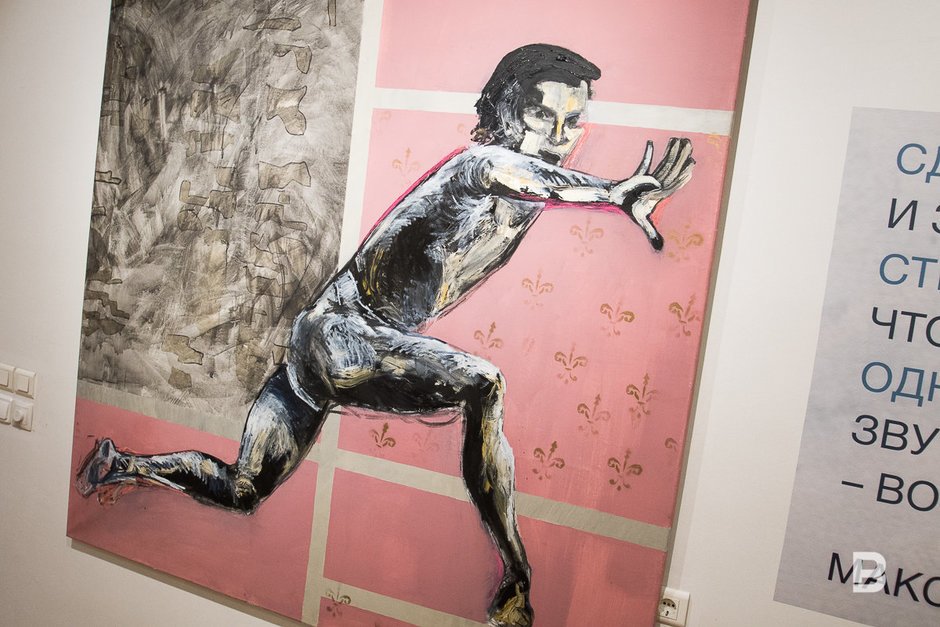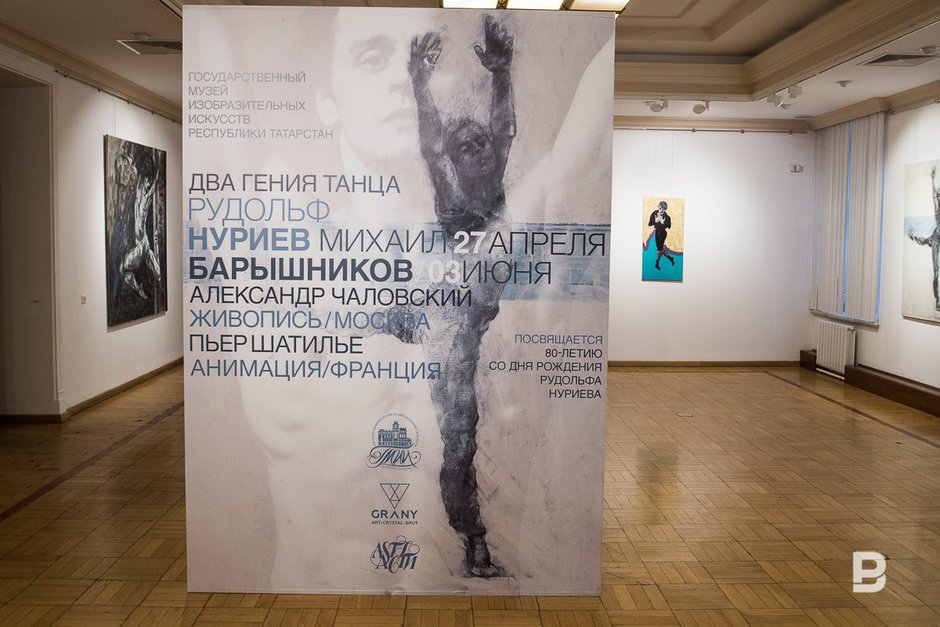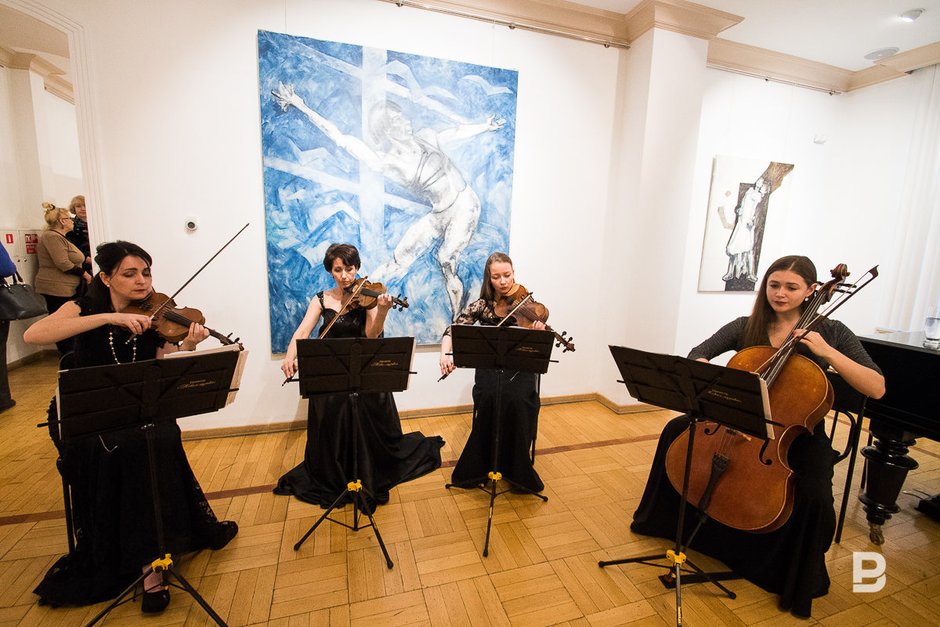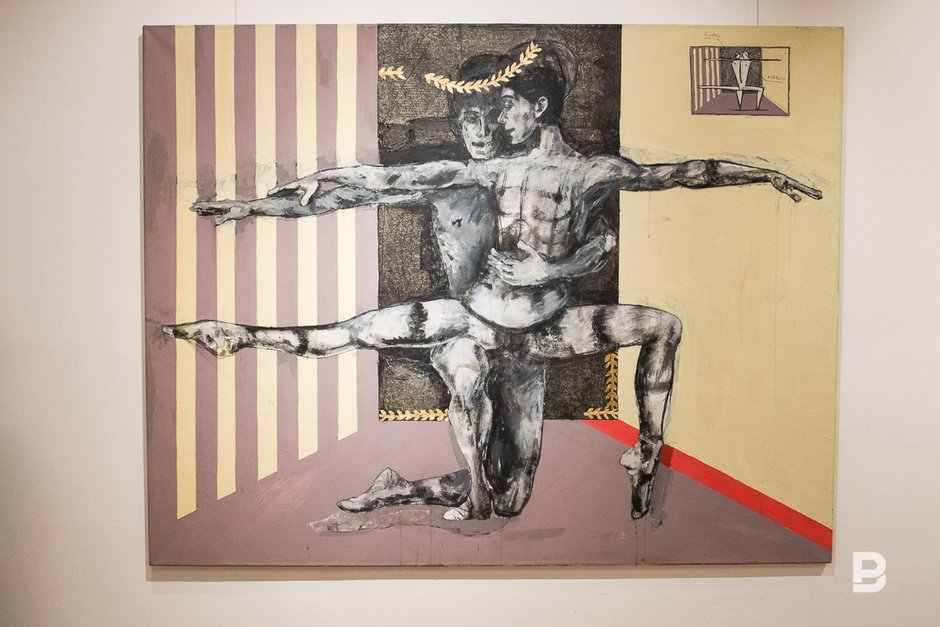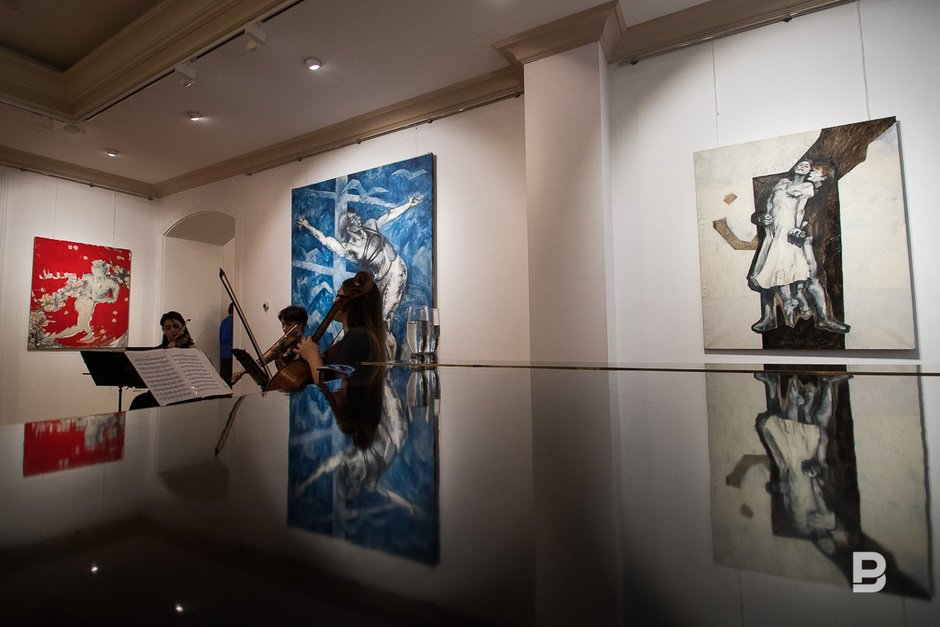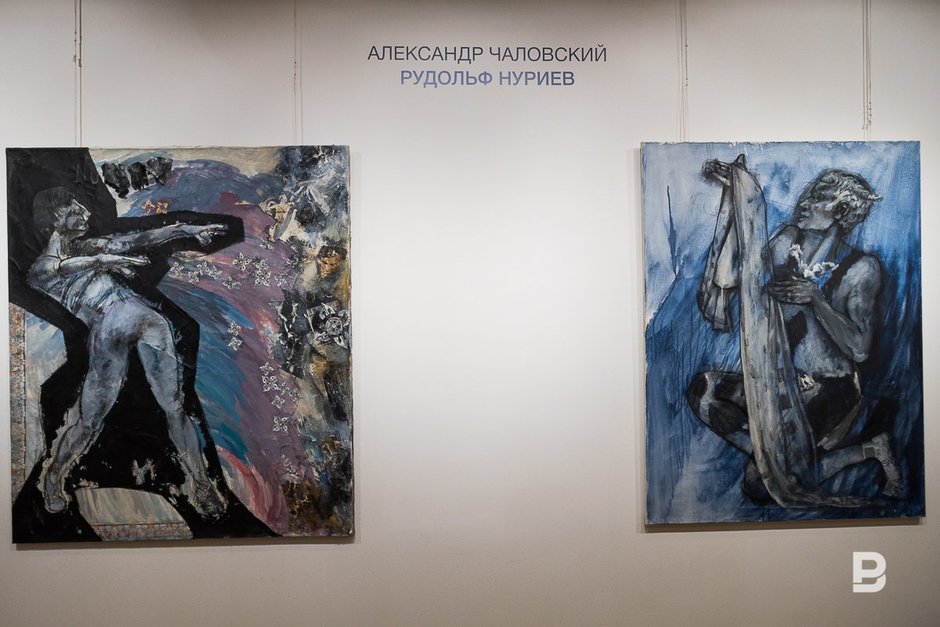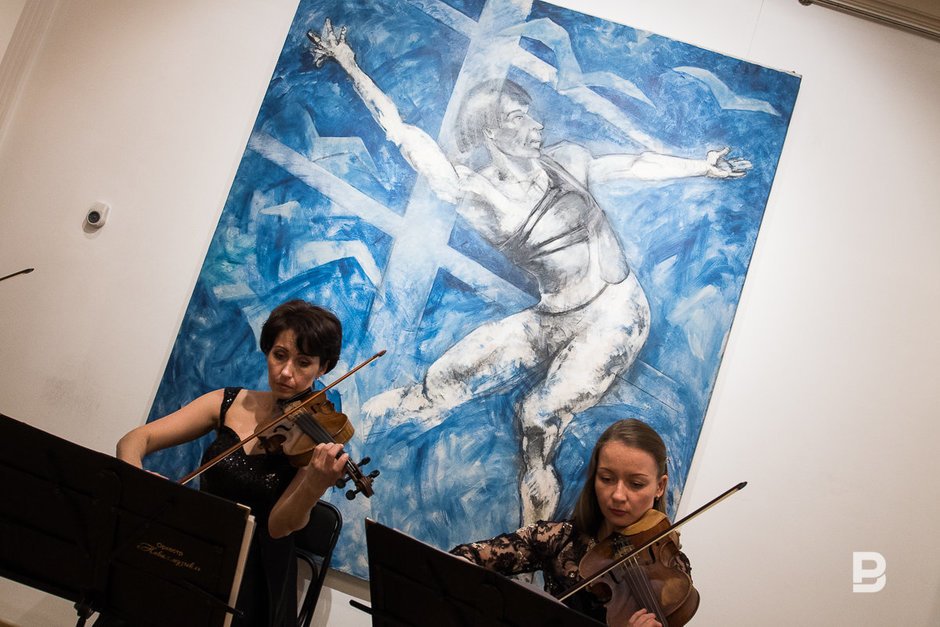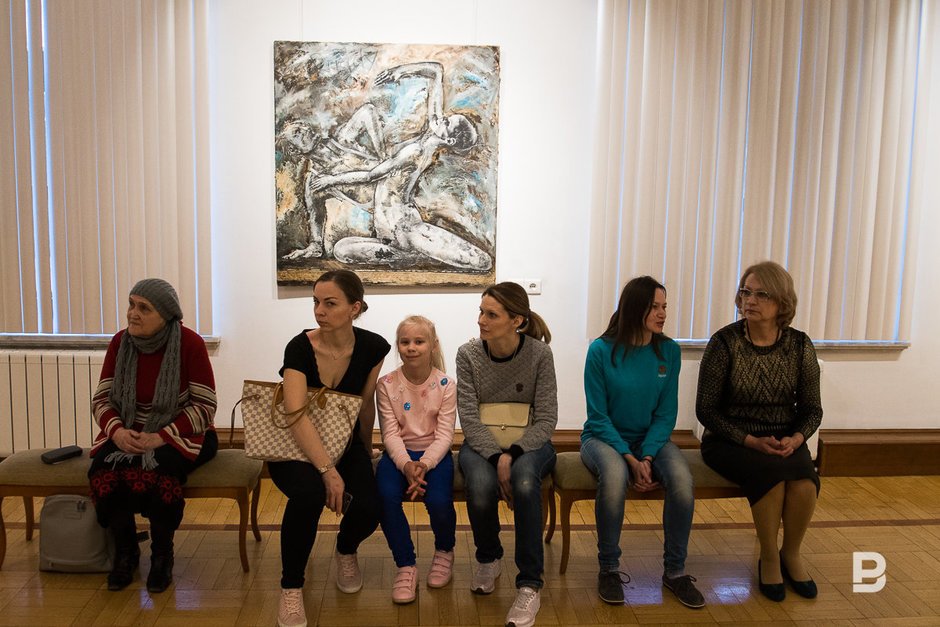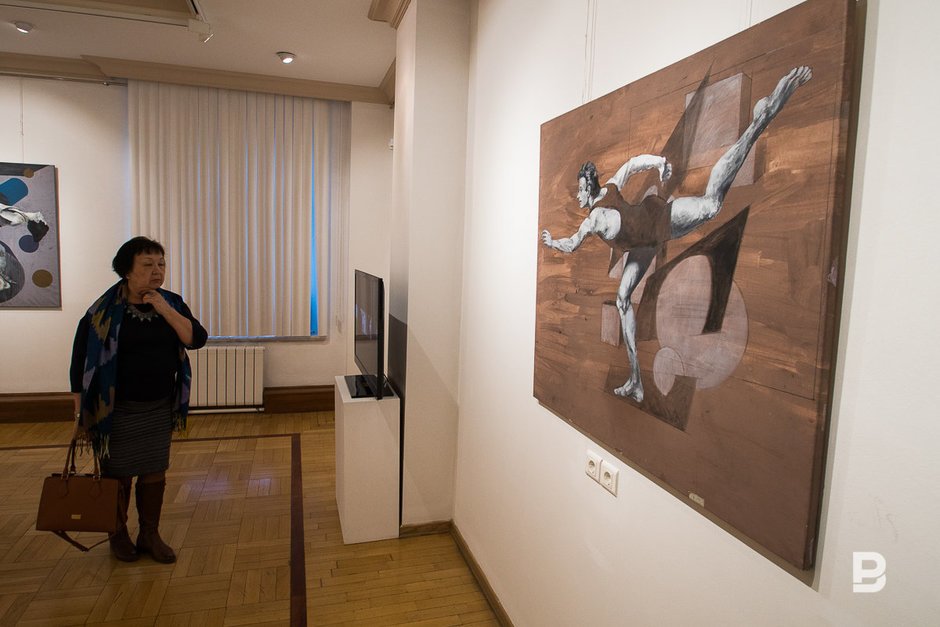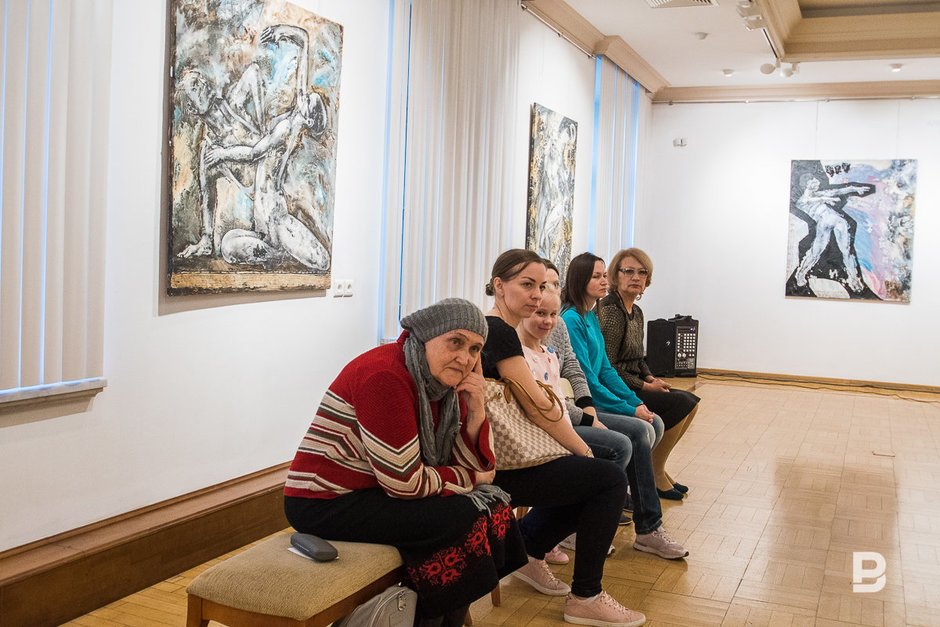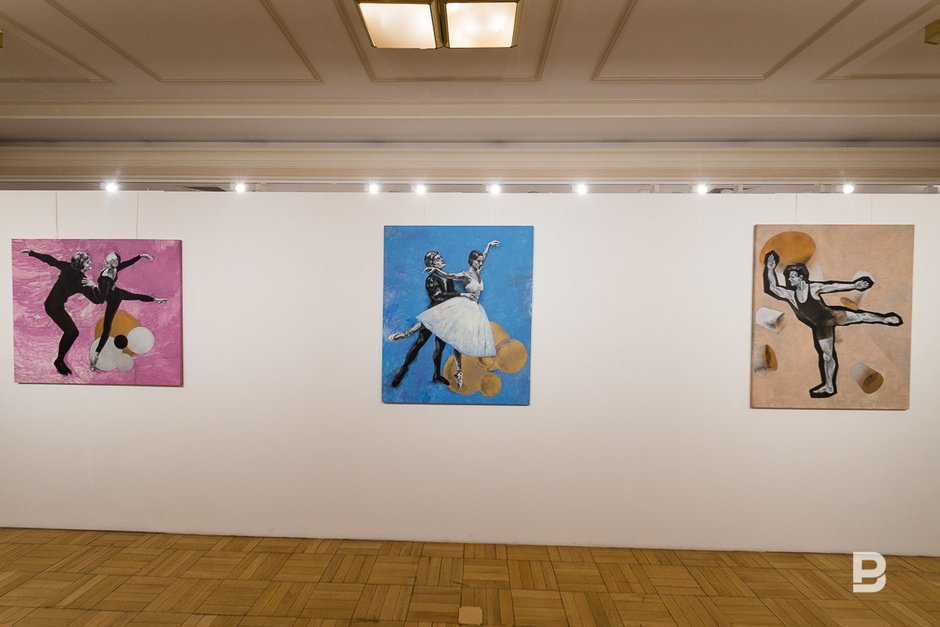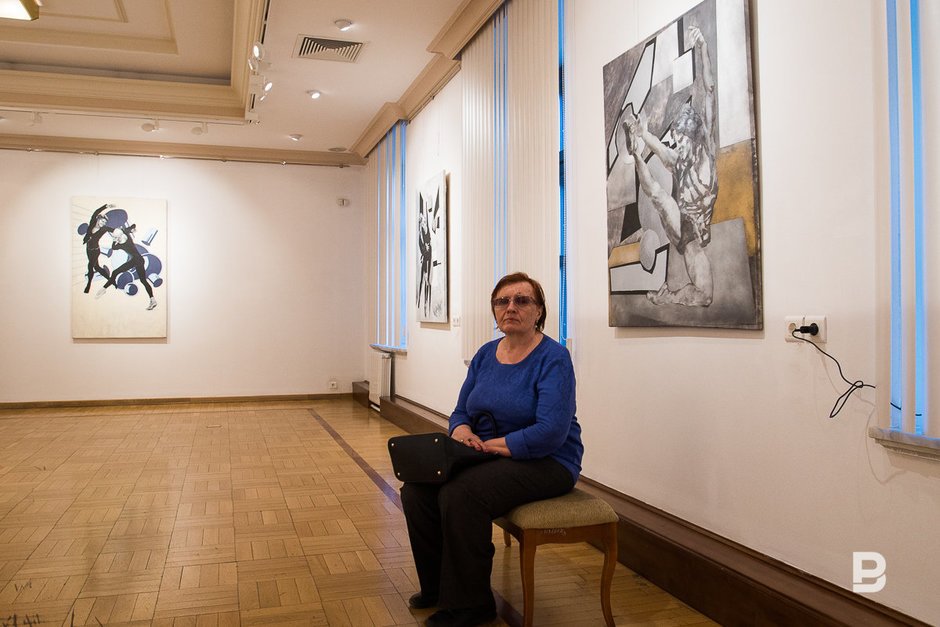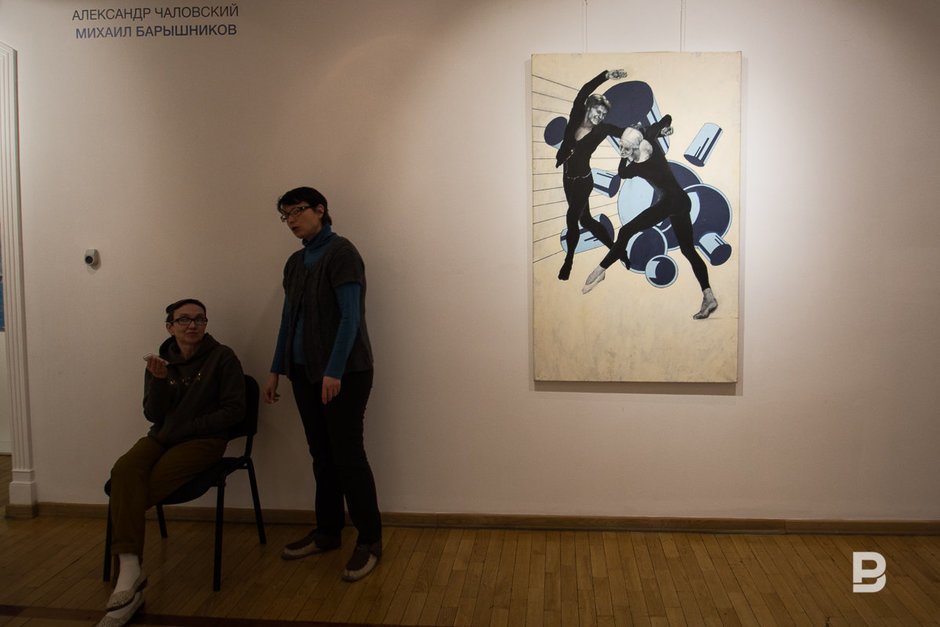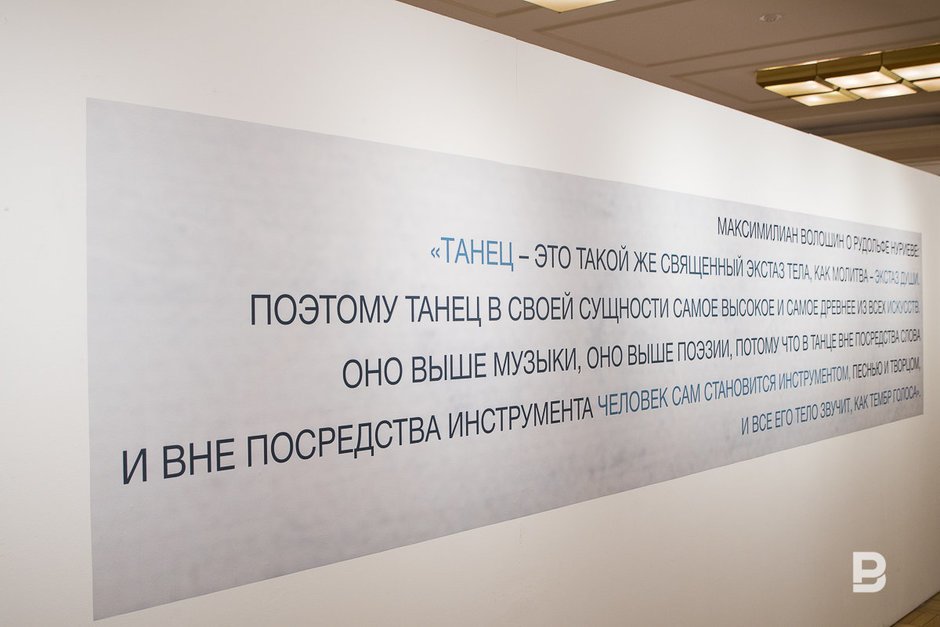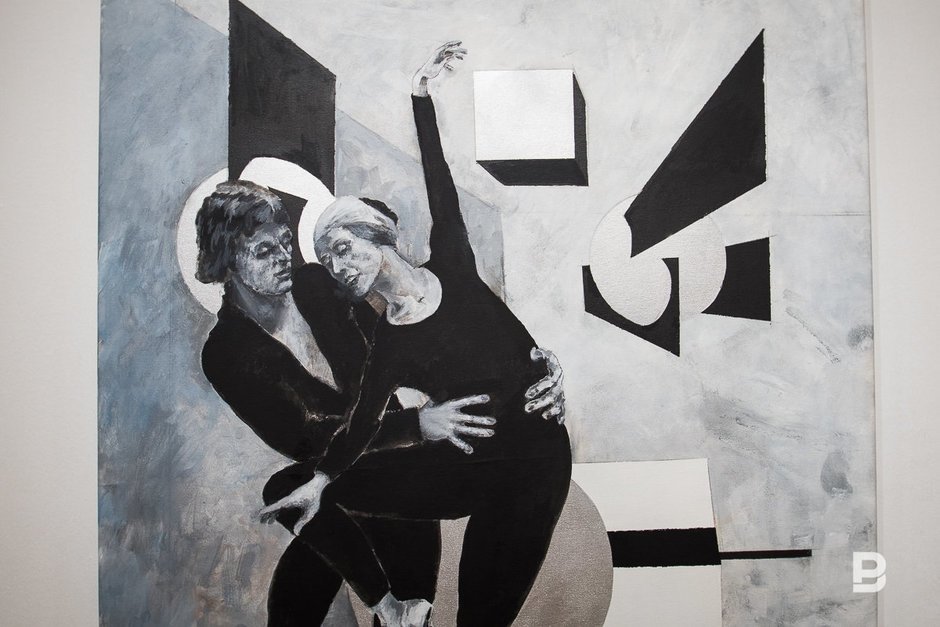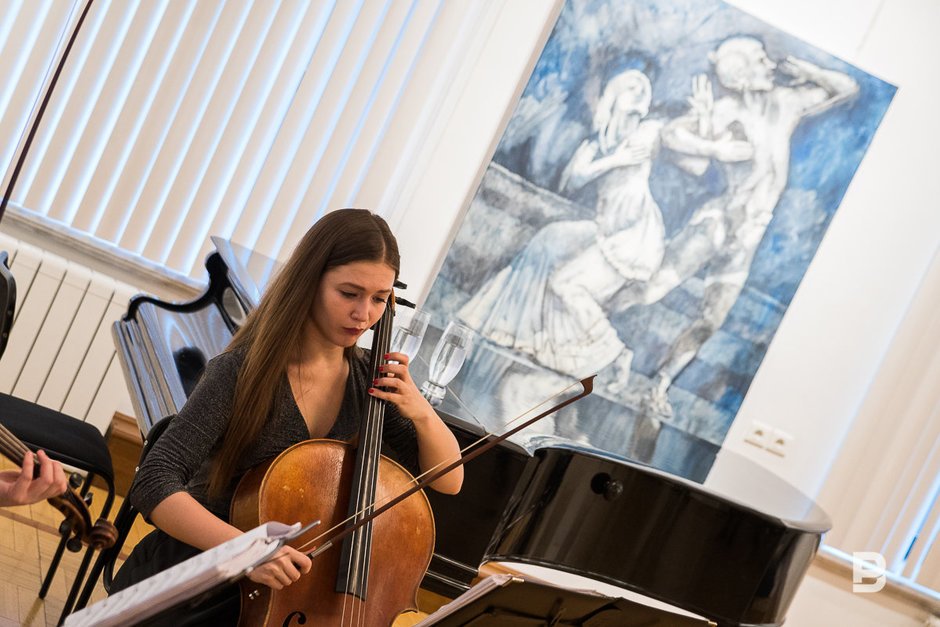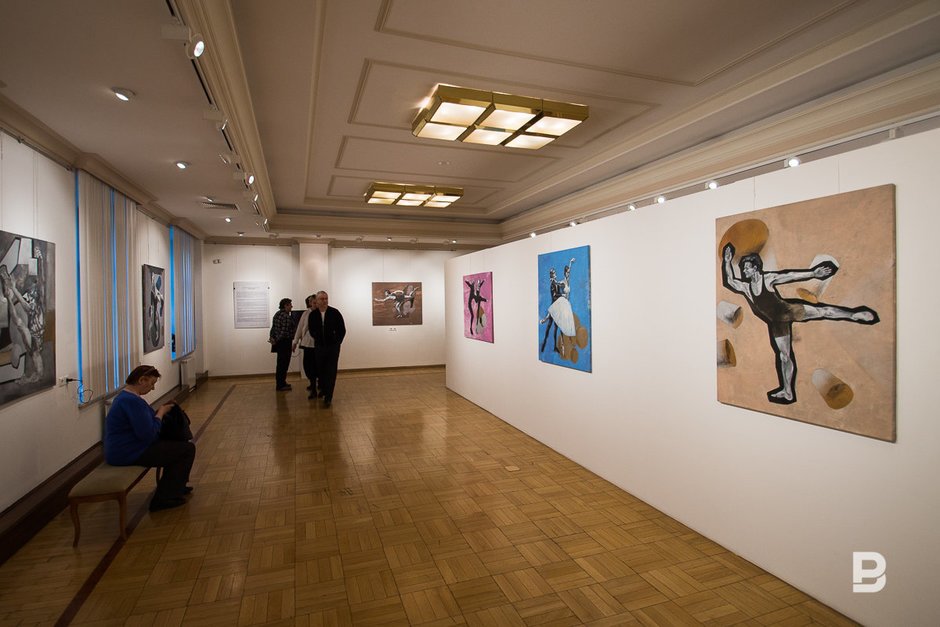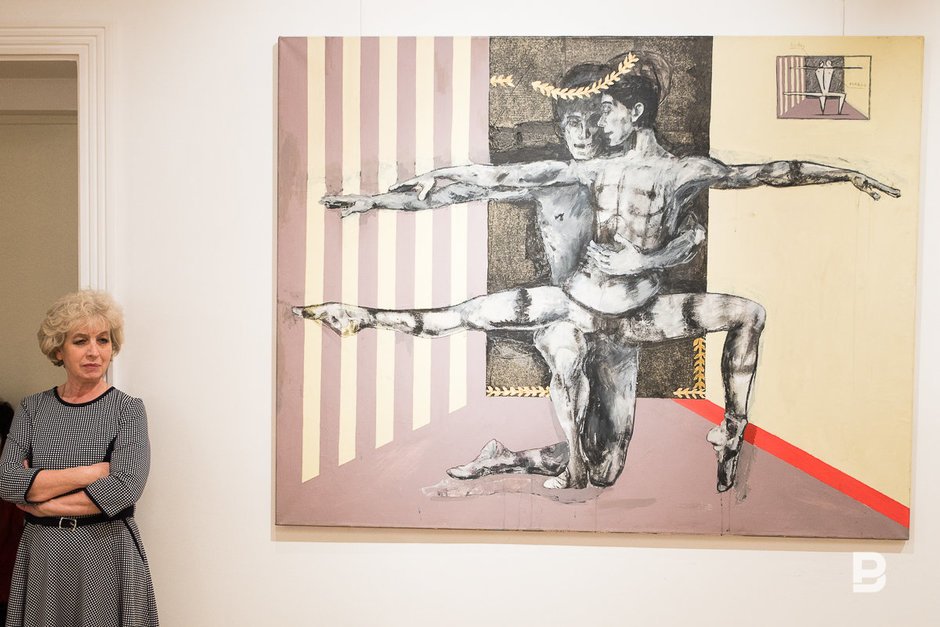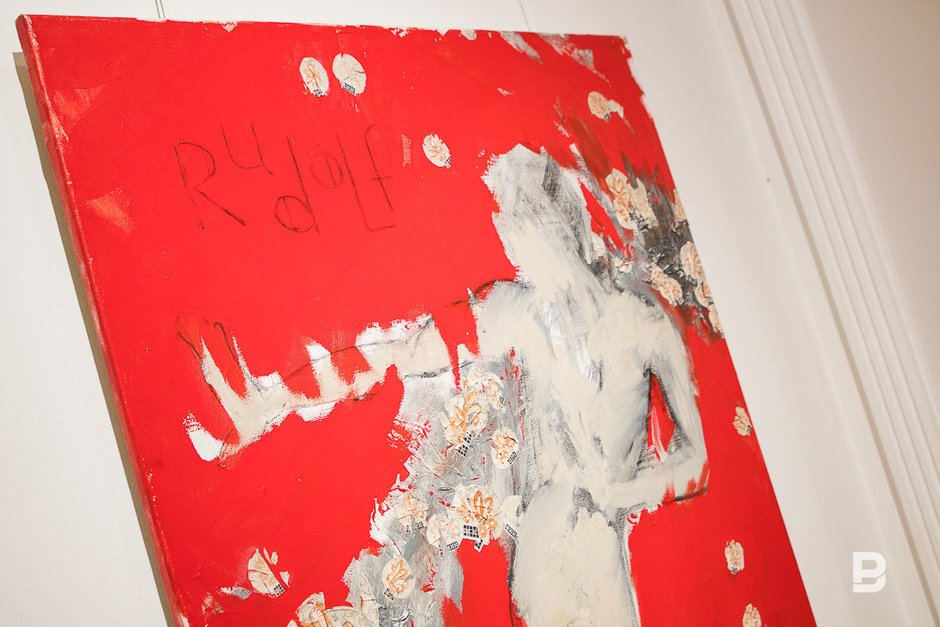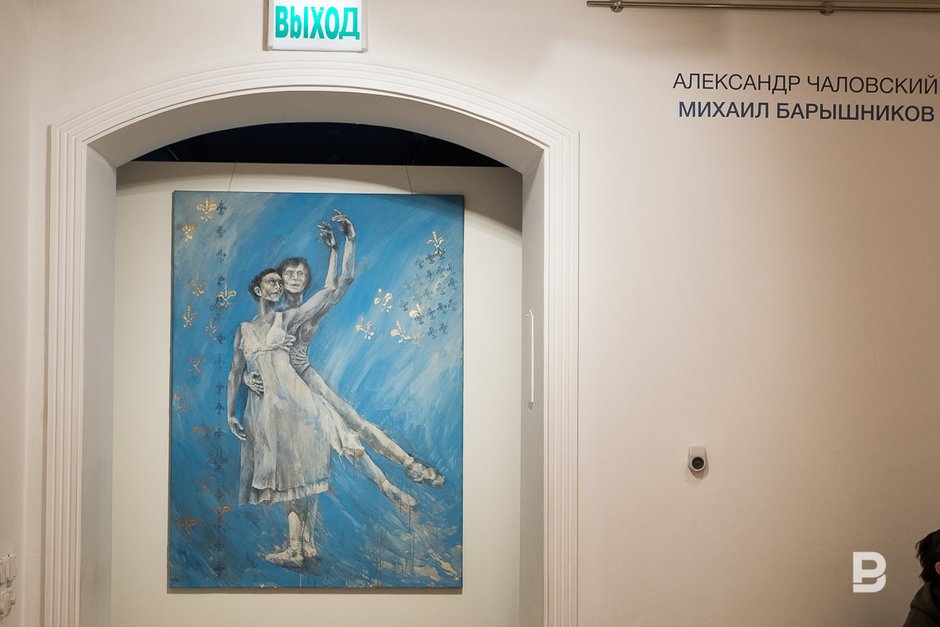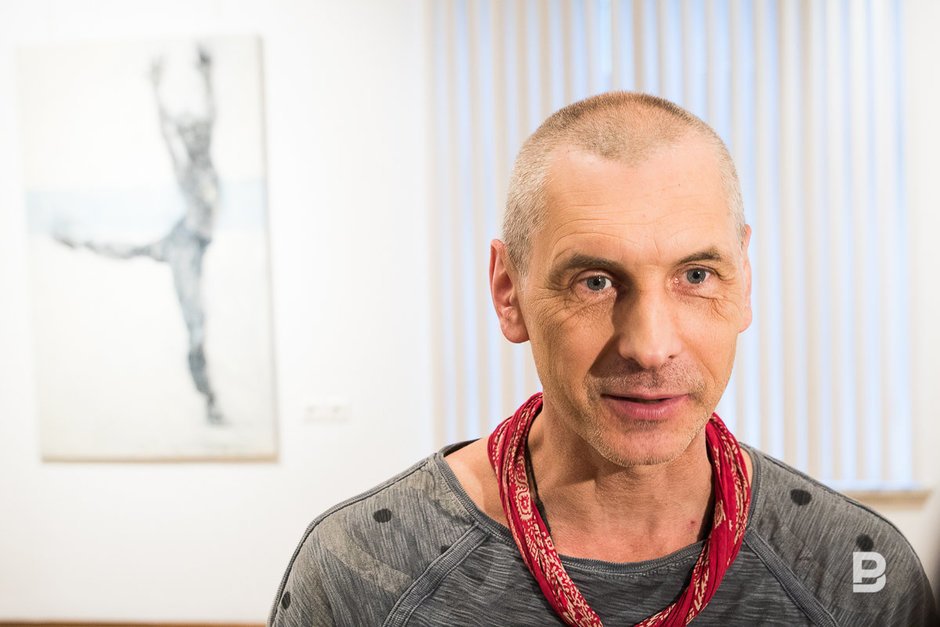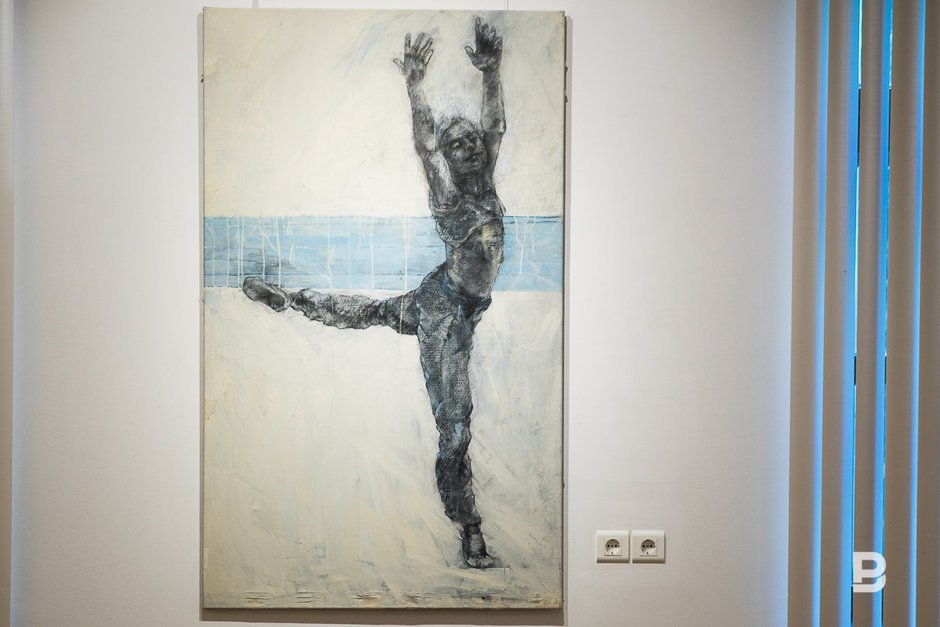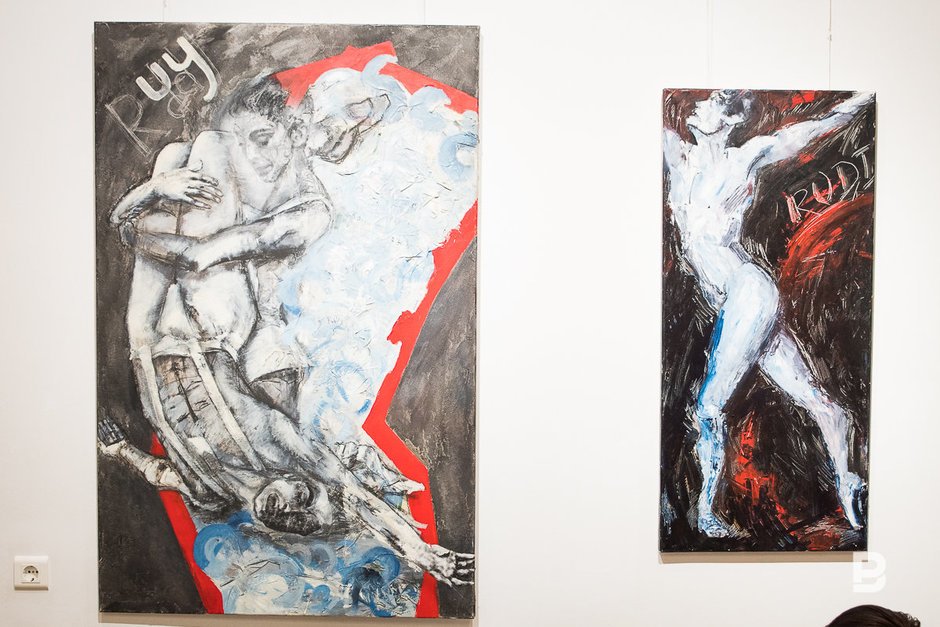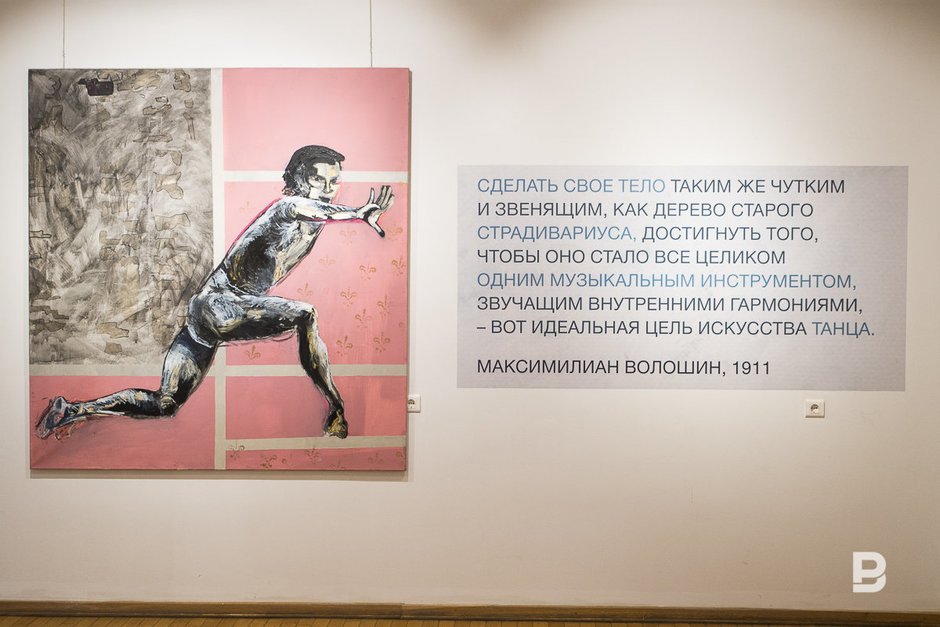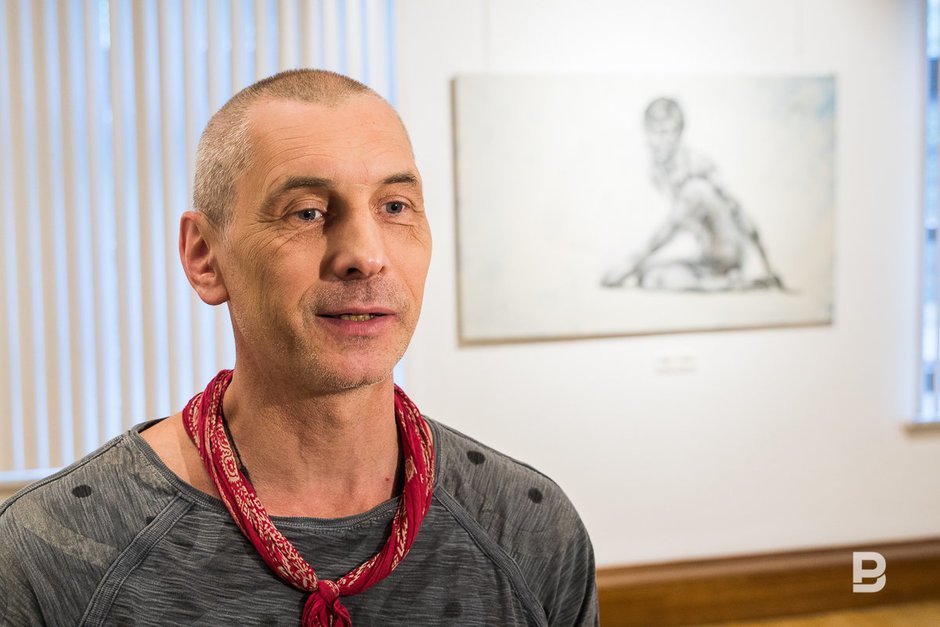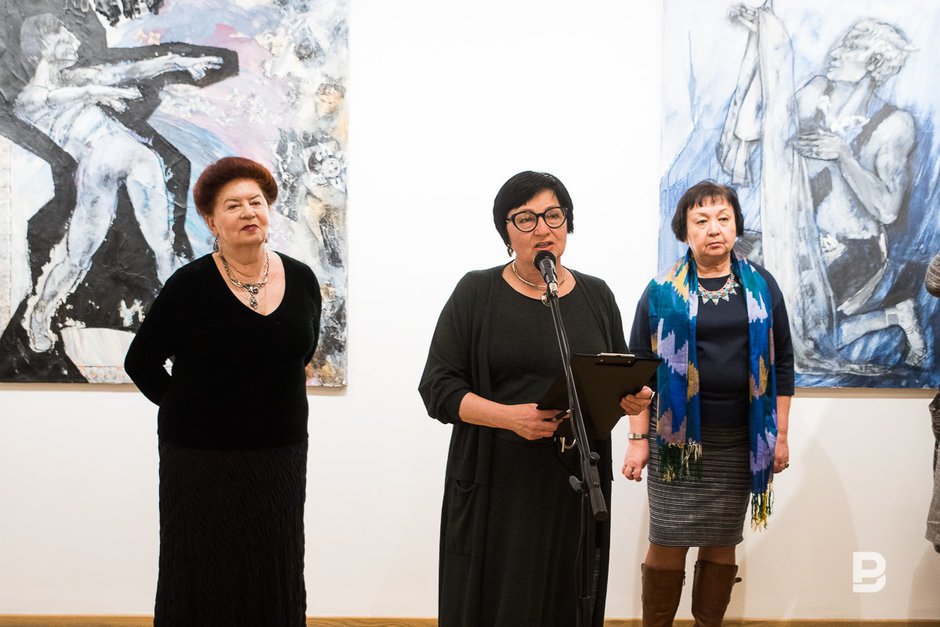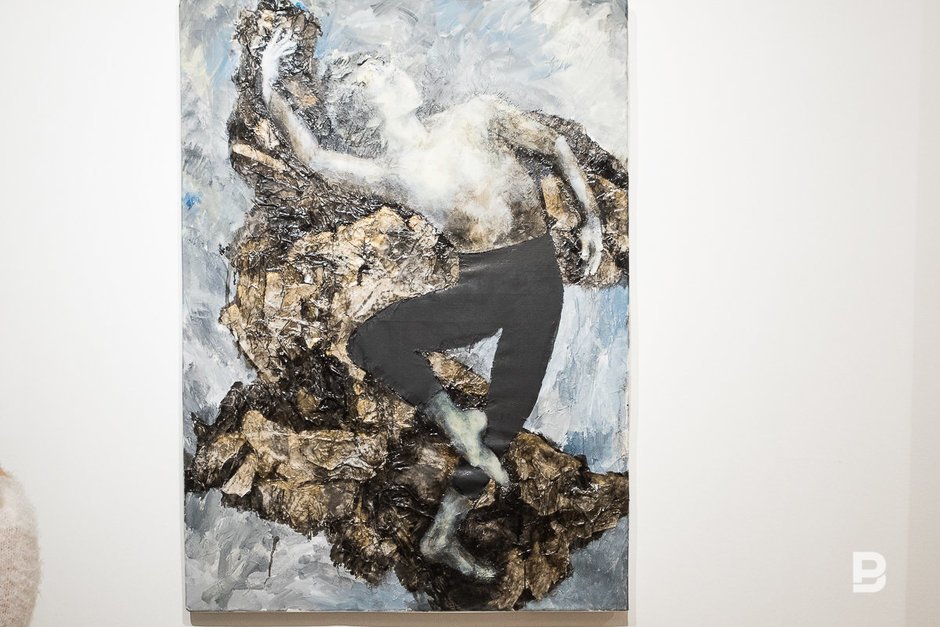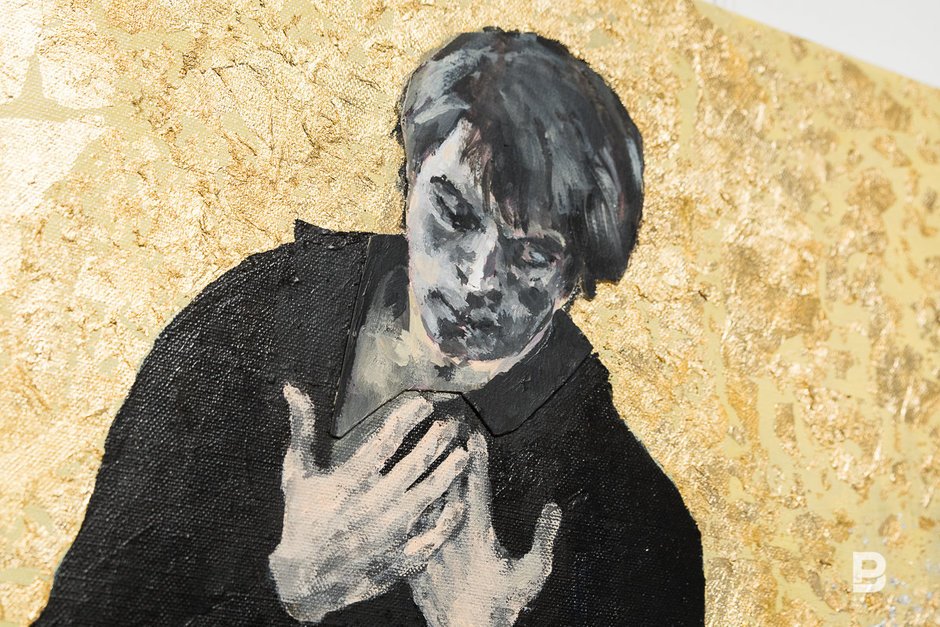Exhibition of works about Rudolf Nureyev: freeze, die, rise!
Baryshnikov got conservative America, and Nureyev — Europe, as a result of a battle of the two dancers
The exhibition of unique works dedicated to Rudolf Nureyev opened on 27 April in the contemporary modern art gallery Khazine in Kazan. As it is known, the great dancer was also a reckless collector of paintings and antiques. If he had seen the works placed in the exhibition, he would have certainly bought at least few. Read the details in the material of Realnoe Vremya.
Antagonists?
To be precise, the exhibition has two heroes — Rudolf Nureyev and Mikhail Baryshnikov. Forgive me, the fans of the latter, but the union of these two dancers played a cruel joke with Baryshnikov. Against the background of the charismatic ''flying Tatar'', Baryshnikov faded.
Yes, there was a war in the history of real relations between Nureyev and Baryshnikov, and if then the victory went to one, then to another — of course, to Nureyev more often, then now Rudolf Khamitovich won unconditionally. The portraits of Baryshnikov seemed to fade next to the images of Nureyev, about whom Maurice Béjart said he was photogenic like Marilyn Monroe.
In the war of Nureyev and Baryshnikov there participated their fans, agents, producers and their ilk. There was enormous support from journalists. Finally, it was kind of a forced truce. Nureyev went to Europe, Baryshnikov — to America. As Eduard Limonov writes about this battle of the two dancers, strong and undersized Baryshnikov got conservative America.
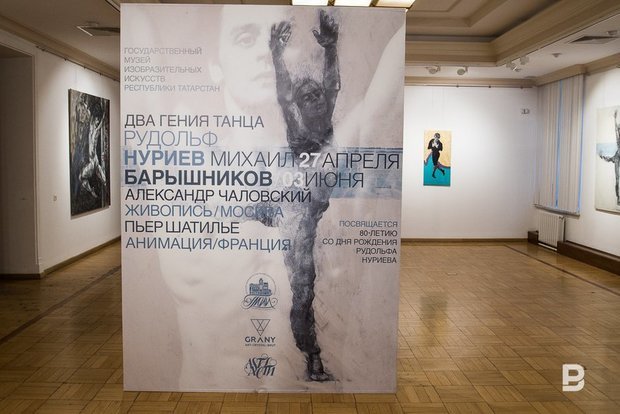
''And Europe, capricious and flighty, the birthplace of arts, went to the champagne genius, eccentric — cheekbones, cheeky grin, arrogant magnificence — to Rudolf Nureyev,'' says Limonov. When he lived in New York, he lived nearby to Baryshnikov, and the dancer liked his novel It's Me, Eddie. But Limonov's soul belonged to Nureyev, and it can be understood.
Such a crazy, child-like stubbornness and whims, such commitment, celestial charm, like Rudolf had, no other dancer had either before nor after. Well, except that some glimmers can be caught in Vaslav Nijinsky, but he would have paled next to Rudolf. Not coincidentally, Nureyev played in the film brilliantly his namesake, Rudolph Valentino, in the final resting place of whom there then happened a series of suicides.
And what about Baryshnikov? Here are some characteristic given by Limonov: ''Misha Baryshnikov, short-legged compared to Nureyev, workaholic with wet bangs, looked next to Rudolf like a farmer. The glamour and stunning effect of the presence, which the Tatar-Mongol had, Misha did not radiate.'' No, he did not. And it is felt at the exhibition. It was wrong to bring them in a single exposition as the author of the works decided.
The dream of Faun and Petrushka
The author of the works about Nureyev and Baryshnikov — artist Alexander Chalovsky. He often refers to the image of the ''flying Tatar''. In Kazan, his works have been brought by the fund Grani, timing the exhibition in the homeland of the mother of the great dancer to his anniversary and the Nureyev festival. The works of Chalovsky — powerful, expressive, befitting to violating the laws of gravity of dance Rudolf Nureyev. The author achieved a striking effect: he captured the famous jumps of Nureyev, his ''hoverings'' in the fraction of a second when he hovers over the stage. It seems that in a moment — and the movement will continue.
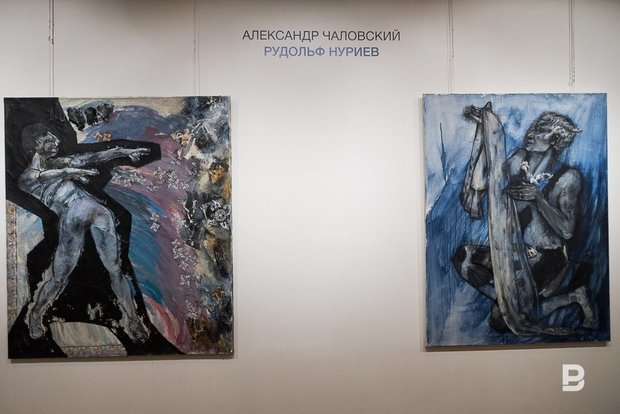
The exhibition is designed for people who are familiar with the art of Nureyev because by characteristic poses, the elements of the costumes you can find out in which part the artist is depicted. In fact, it is a creative biography of Nureyev, made in a peculiar, sharp and sometimes even aggressive technique. Capturing the dance in statics is a great skill.
There is also famous Petrushka to Stravinsky's music. There is also hello from Vaslav Nijinsky — the resting Faun. Or Solor, who is about to go to the land of shadows and dreams. Of course, it couldn't do without duets with Margot Fonteyn — the artist embodied the tragic fracture of the dying Marguerite Gautier and Armand's insane grief. This is in some ways an illustration of the ballet Marguerite and Armand staged by Frederic Ashton to Liszt's music. To the play specially made for Nureyev and Fonteyn.
May in Kazan is forever associated with the name of Nureyev. Exactly in May twenty-six years ago, the public saw the great dancer as a conductor — he conducted the orchestra of the Kazan opera and the symphony orchestra, coming to Kazan at the invitation of the director of the Tatar State Academic Opera and Ballet Theatre named after Dzhalil, Raufal Muhametzyanov. This spring, thanks to the exhibition in Khazine, he as if returned to the homeland of his mother again.
